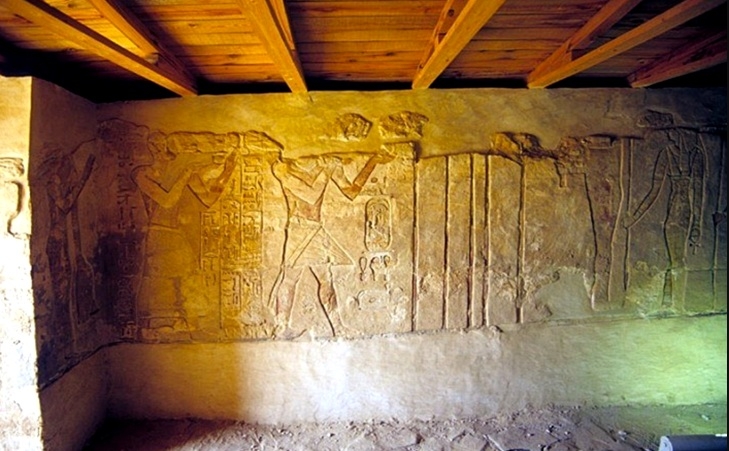The Temple of Ain El Muftella is located in the central area of the Bahariya Oasis at the exit point of the road that links the Bahareya to the Siwa Oasis. This temple used to be the city center in the ancient city of El Qasr. It was most likely built around the time of the 26th Dynasty, though some sections of the temple may date from earlier in the New Kingdom. The temple was probably added to by both the Greeks, and later the Romans.
Parts of the temple were built by a high priest named Zed-Khonsu-efankh whose brother, Sheben-Khonsu was governor of the district during the reign of Ahmose II.
This site contains four chapels that were discovered in 1939 by Ahmed Fakhry, the Egyptian archeologist that holds the credits for most of the discoveries that took place in the Egyptian Western desert. The four chapels belong to the 26th dynasty, the last native dynasty to rule Egypt before the Persian conquest in 525 BC.
These chapels belong to a temple complex built during the rule of Amasis, they are decorated with painted, sunk relief and are of a style similar to what might be found in other Egyptian temples of this period.
In the first chapel which is considered the largest one, there are decorated images on the walls of the chapel dedicated to the Pharaoh Amasis making offerings to a series of gods; the second chapel was built by Zed-Khonsu-efankh who was a rich merchant at old time, there is a scene portraying the high priest with a shaved head worshipping Osiris. The third chapel was probably dedicated almost exclusively to the goddess Bes, while the fourth chapel was also built by Zed-Khonsu-efankh, it is more simple, made of brick and stone, but probably never painted.
Plenty of tombs were founded there like the tomb of Zed-Amun-ef-Ankh and his son Bannentui, who was believed to be a priest and a prophet.

